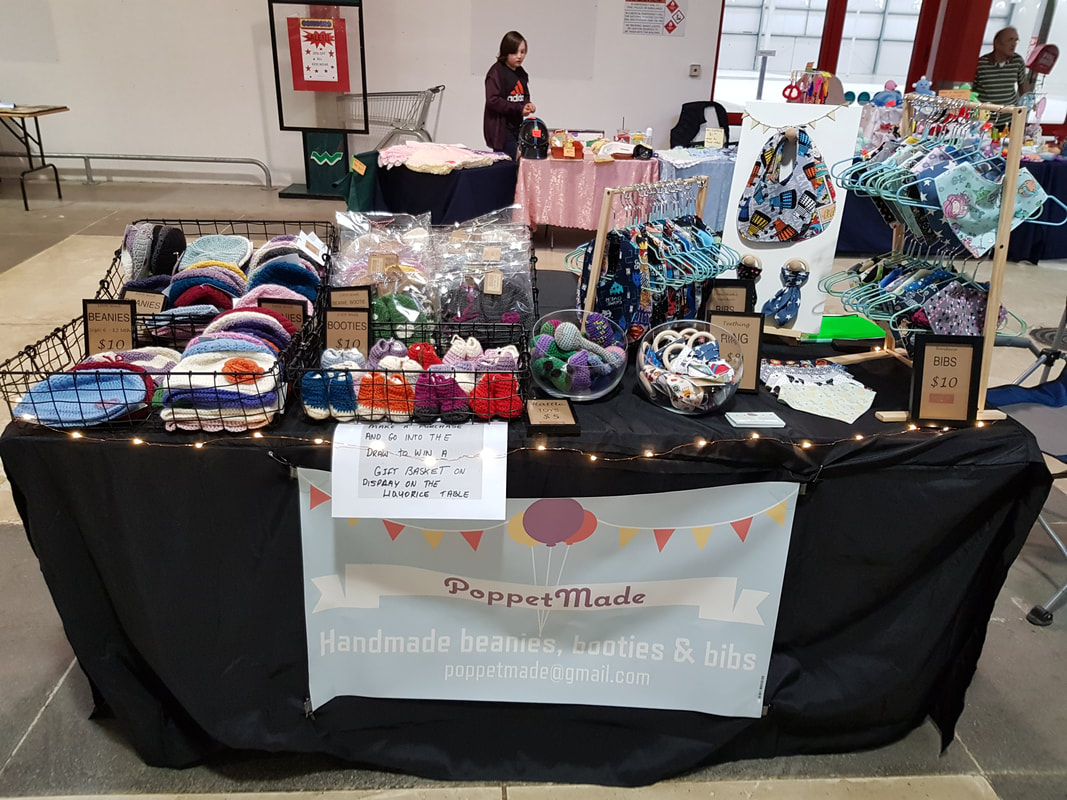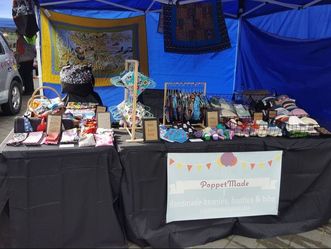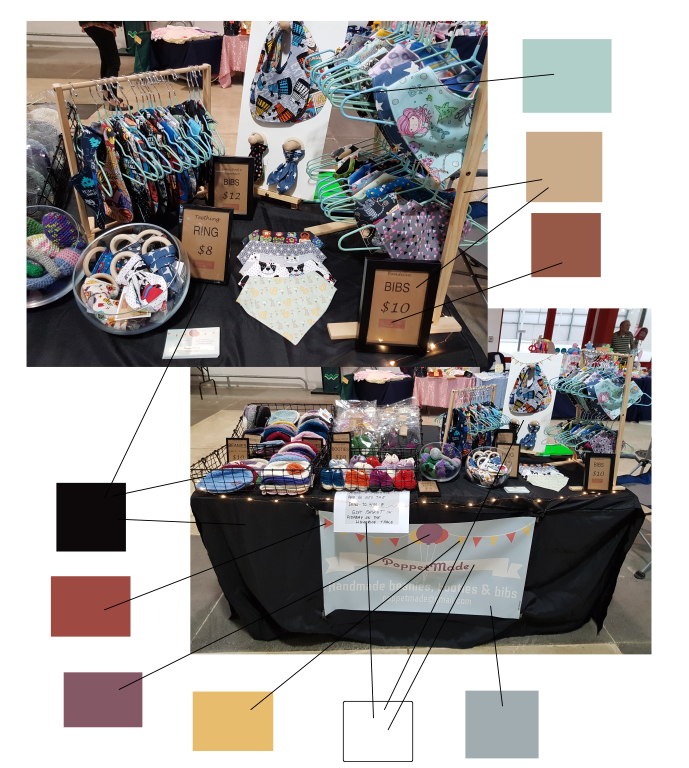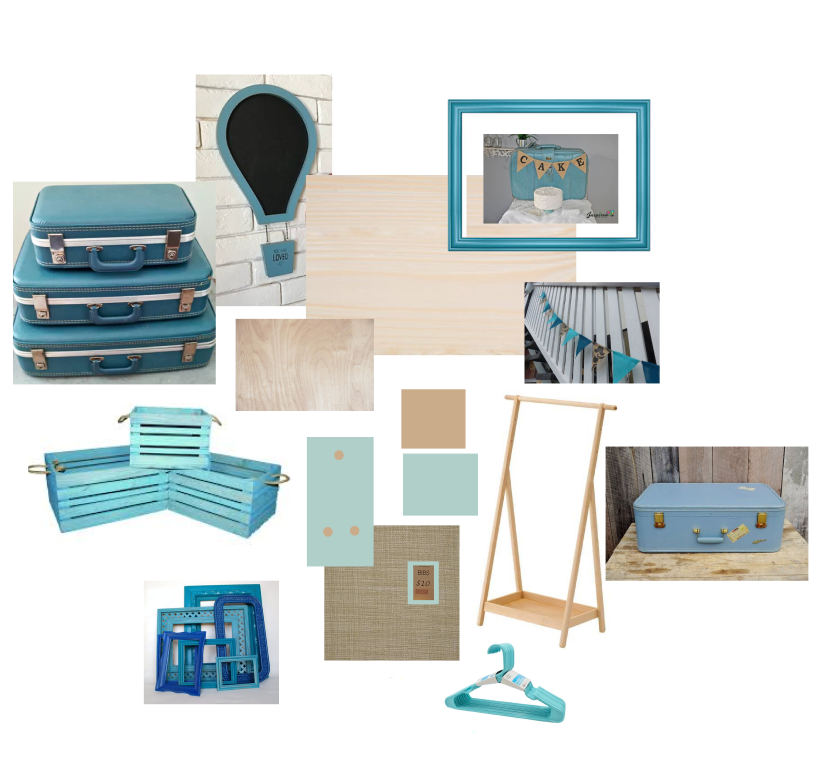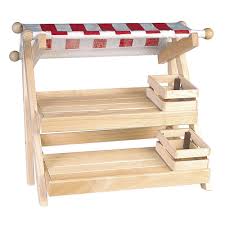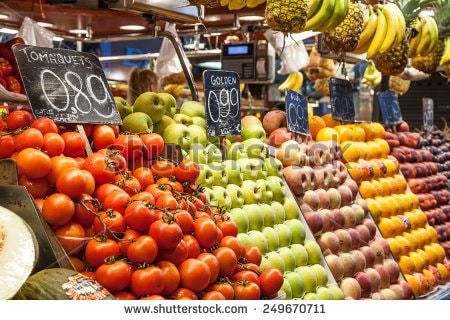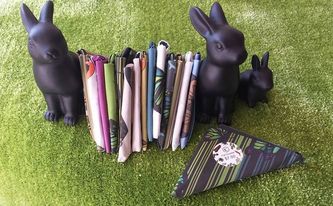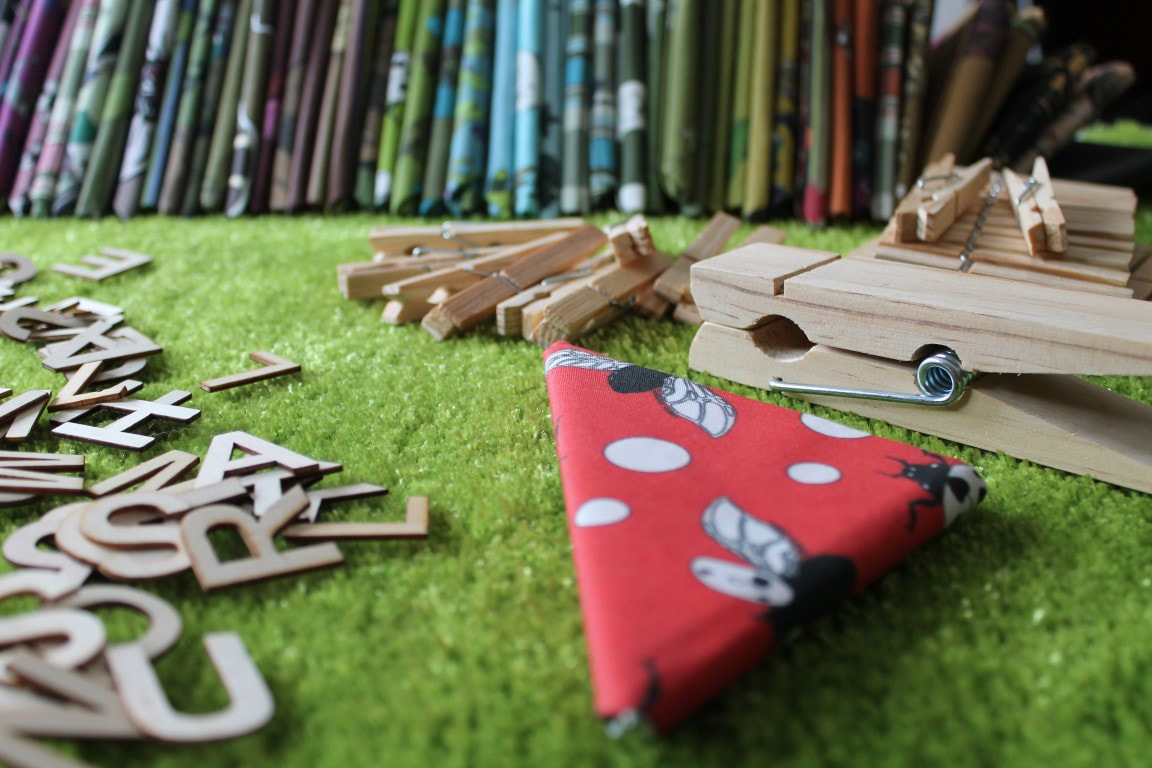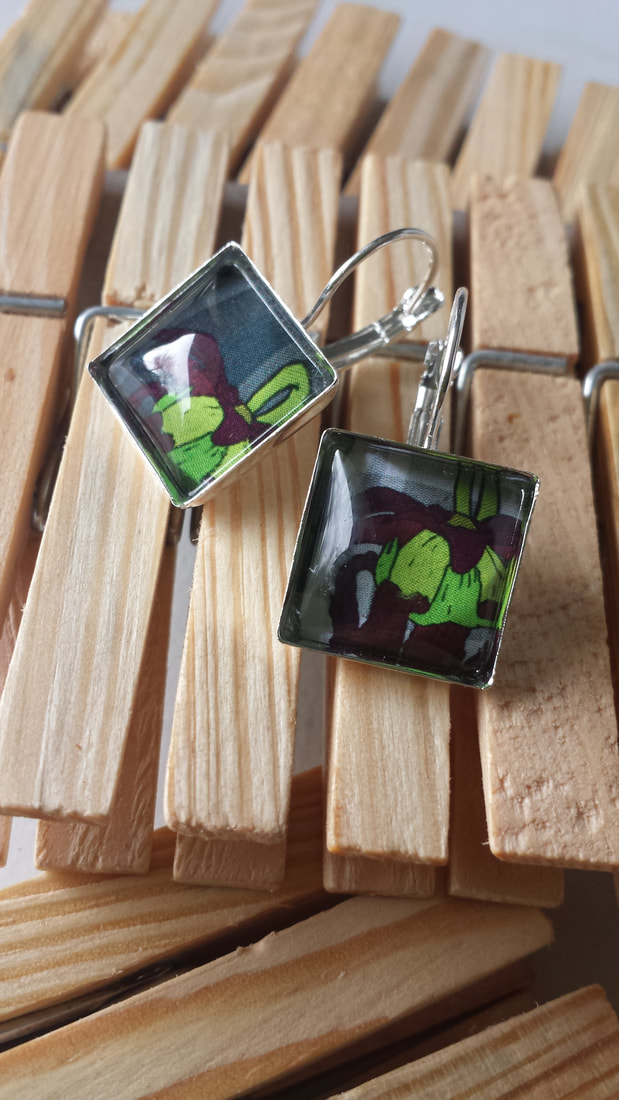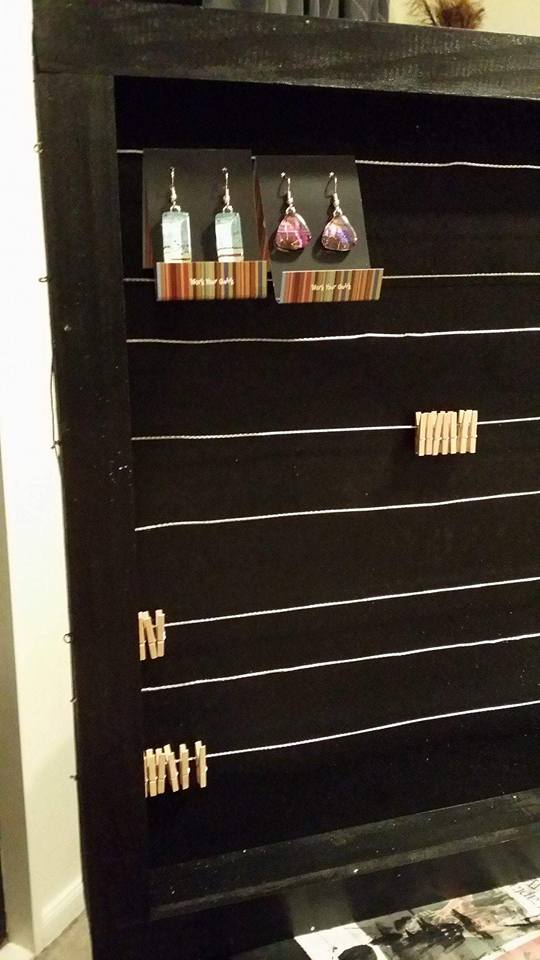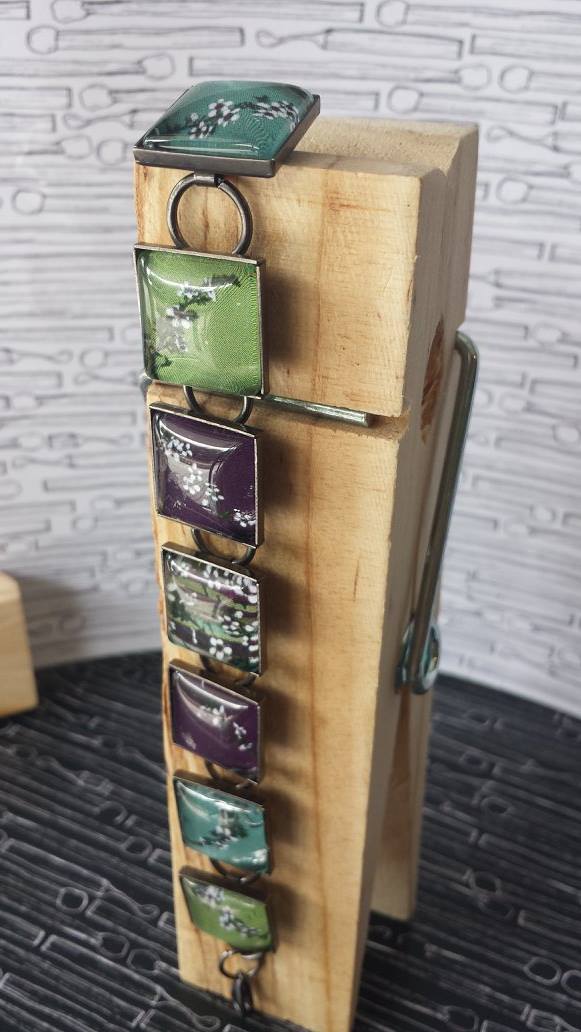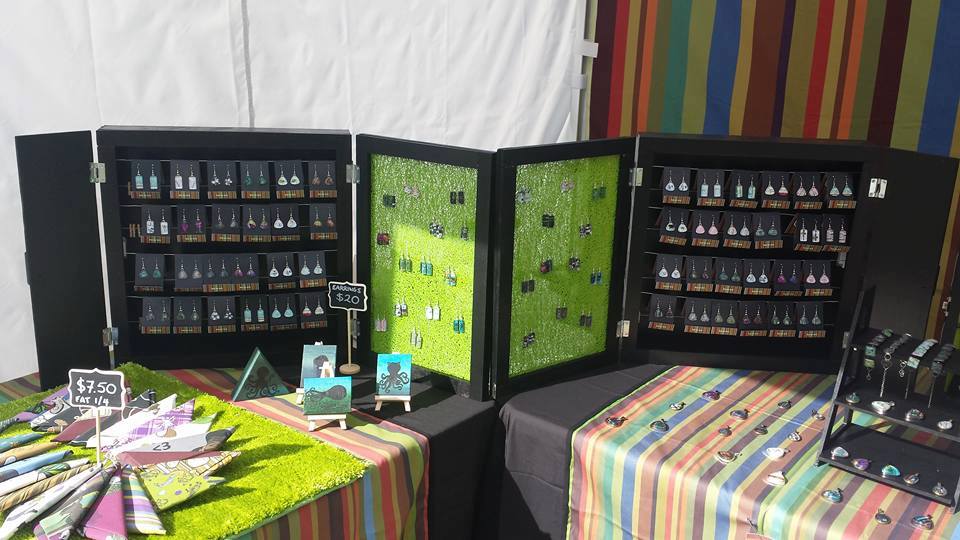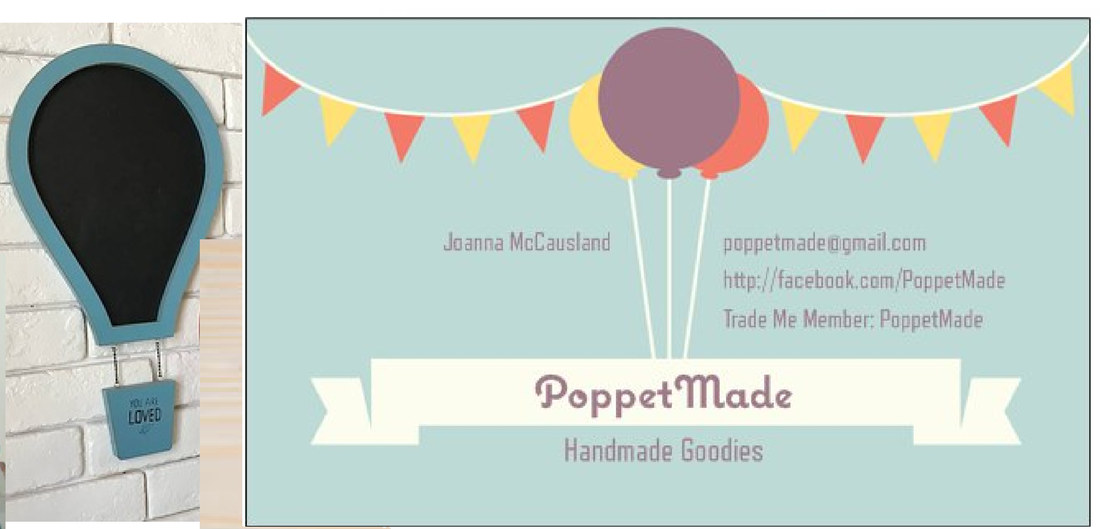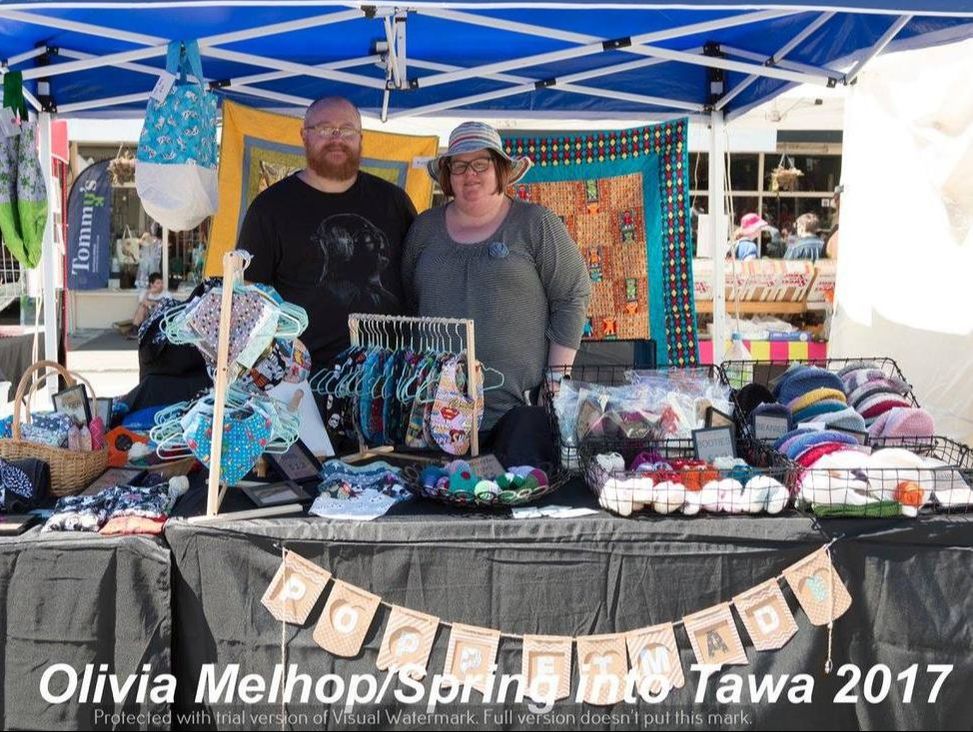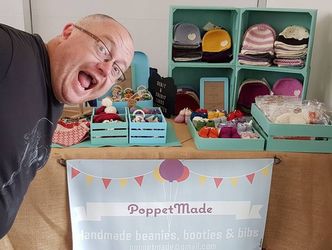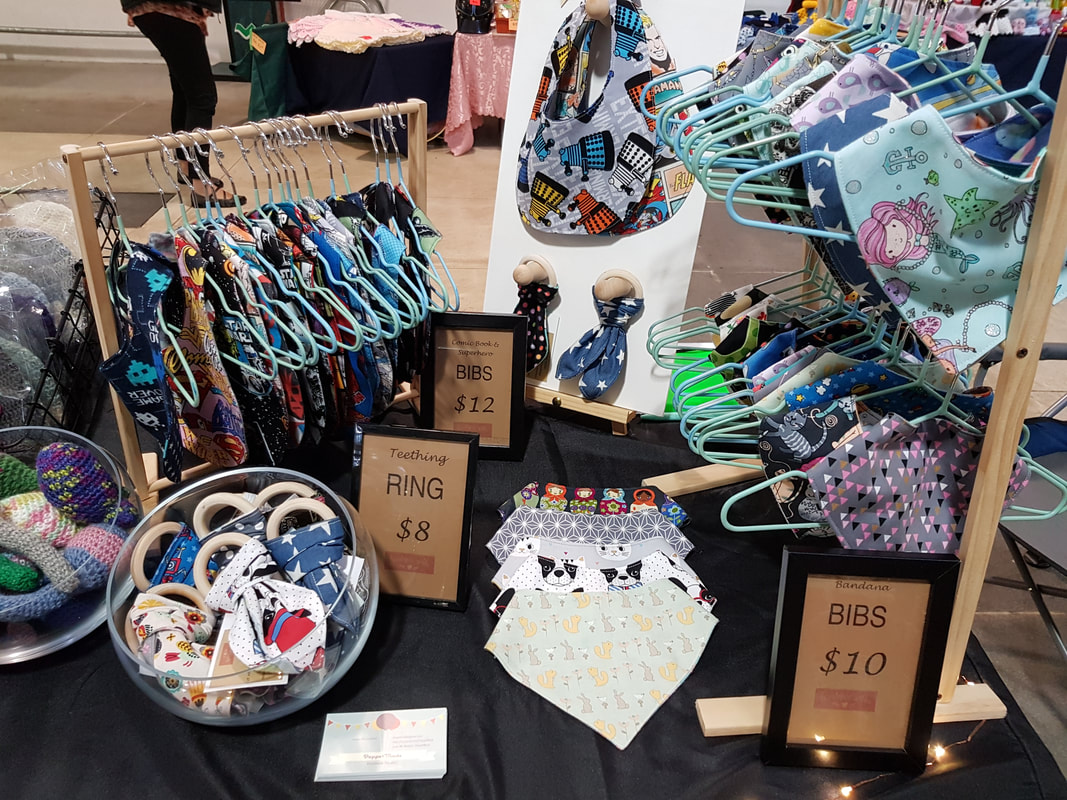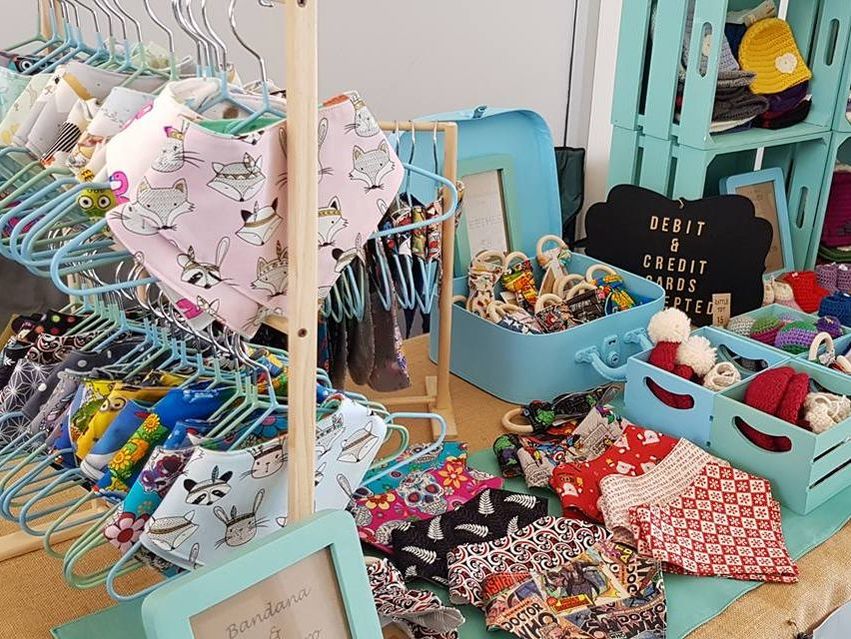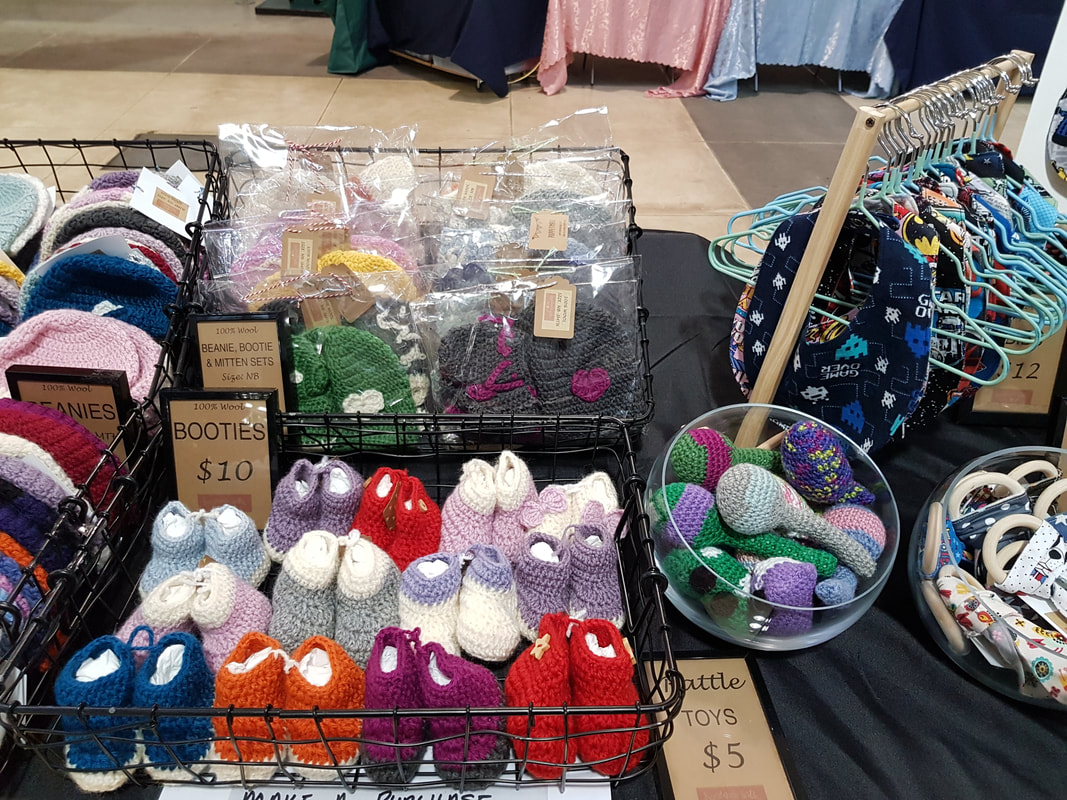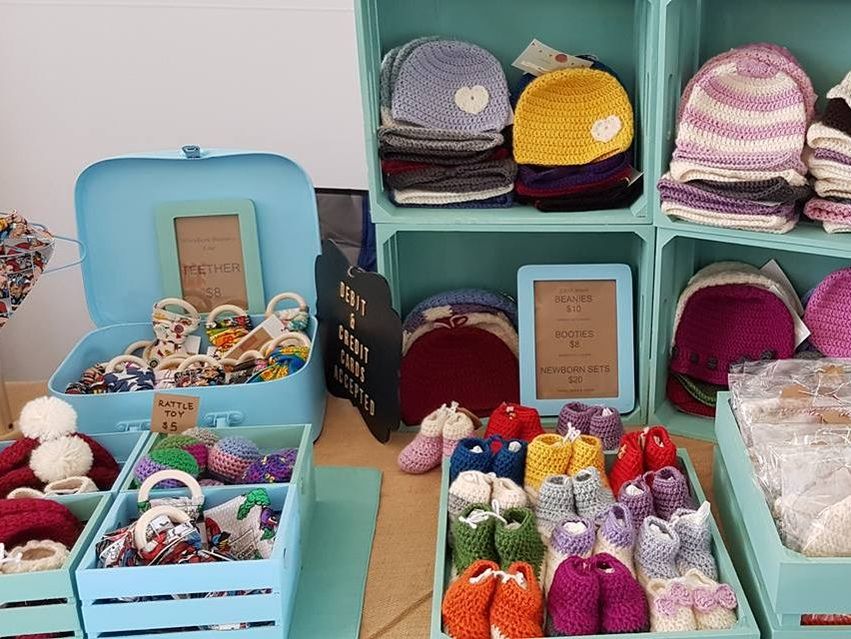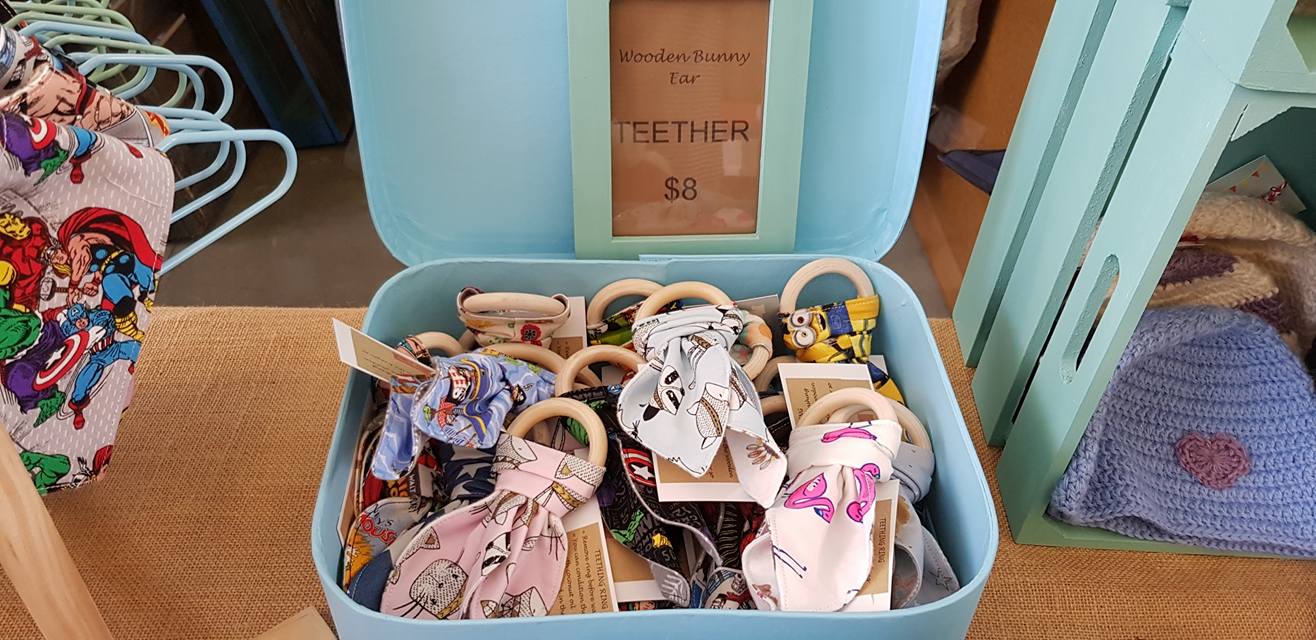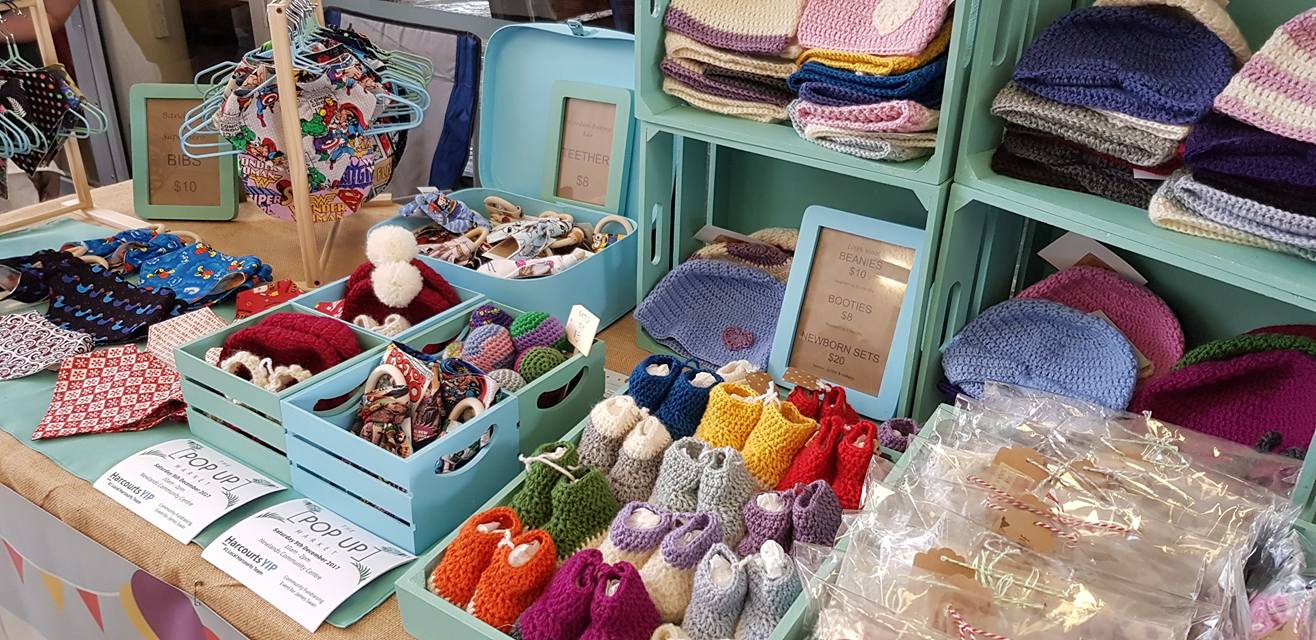We did a brainstorm session for Joanna from PoppetMade
1. How to make my stall more “professional” – considering all my items are handmade, how can I improve on my image?
2. What do you see working/not working as it is set up now?
3. Height – this is something that I have struggled with as my products are mainly flat! I’ve introduced the bib hangers to help with this.
1. Single trestle table
2. Double trestle table. This is when I share with a friend, but my portion is the same layout as a single. Her items are more bulky than mine (quilts, bags etc) so we can hang things up etc. This is usually a gazebo setup.
Thumbnail test – the ‘dress’ principle
The stock itself is neatly displayed and well made, but the overall effect is that the stall looks a little jumbled, and part of that is because there’s no unifying feeling for the stall display colours underneath the stock.
I started by pulling out the main colour impressions of the display – and it was quickly evident that there were too many things going on.
Colour consistency and a point of difference – the ‘flavour’ principle
Black is almost always the right choice for a good tablecloth colour, but in this case, it was too stark – it didn’t look like a stall featuring baby wear.
The hangers and the blonde wood were my favourite elements of the original display, so I used the bib hangers as a starting point for a quick example colour scheme, and then I included her existing neutral wood and brown paper elements to give her stock a backdrop against which to pop. I suggested replacing the generic black baskets with vintage suitcases, painted crates (using her own colour choices), and repurposing old, mis-matched picture frames from op-shops for her price signage.
Visual interest – the ‘dynamic layers’ principle
Merchandising the stock – the ‘fresh’ principle
When you have all kinds of colours, there are two things you can do to freshen up the look of the stall:
- limit your palette
- sort by colour
So in the first instance, you make sure that if you have the colour orange in your repertoire, you only have ONE orange. Multiple shades of the same colour, when using a lot of colours, can look like a mistake. Streamlining your colour choices ads a visual appeal and makes the products stand out more clearly.
If it suits the product, limit yourself to a specific palette – a range of 3 or 4 specific colours, from which you do not deviate.
Alternatively, if you’re like me, and your product requires a lot of shades of colour, sort your stock like a rainbow.
A signature style to get customers’ attention – the ‘hook’ principle
It’s both simple and complex, and depends entirely on the individual circumstances. Each maker will have a different style, and therefore, a different hook.
At Copper Catkin, we have several quiet signature items that are part of our display, and make us recognisable long before people get close enough to see individual stock items – we use the ‘grass’ rug, a variety of natural wooden pegs, our Miss Match stripe, and, of course, our favourite vibrant green.
What Joanna Did Next
This is the most successful transformation that I have seen yet (images supplied).

